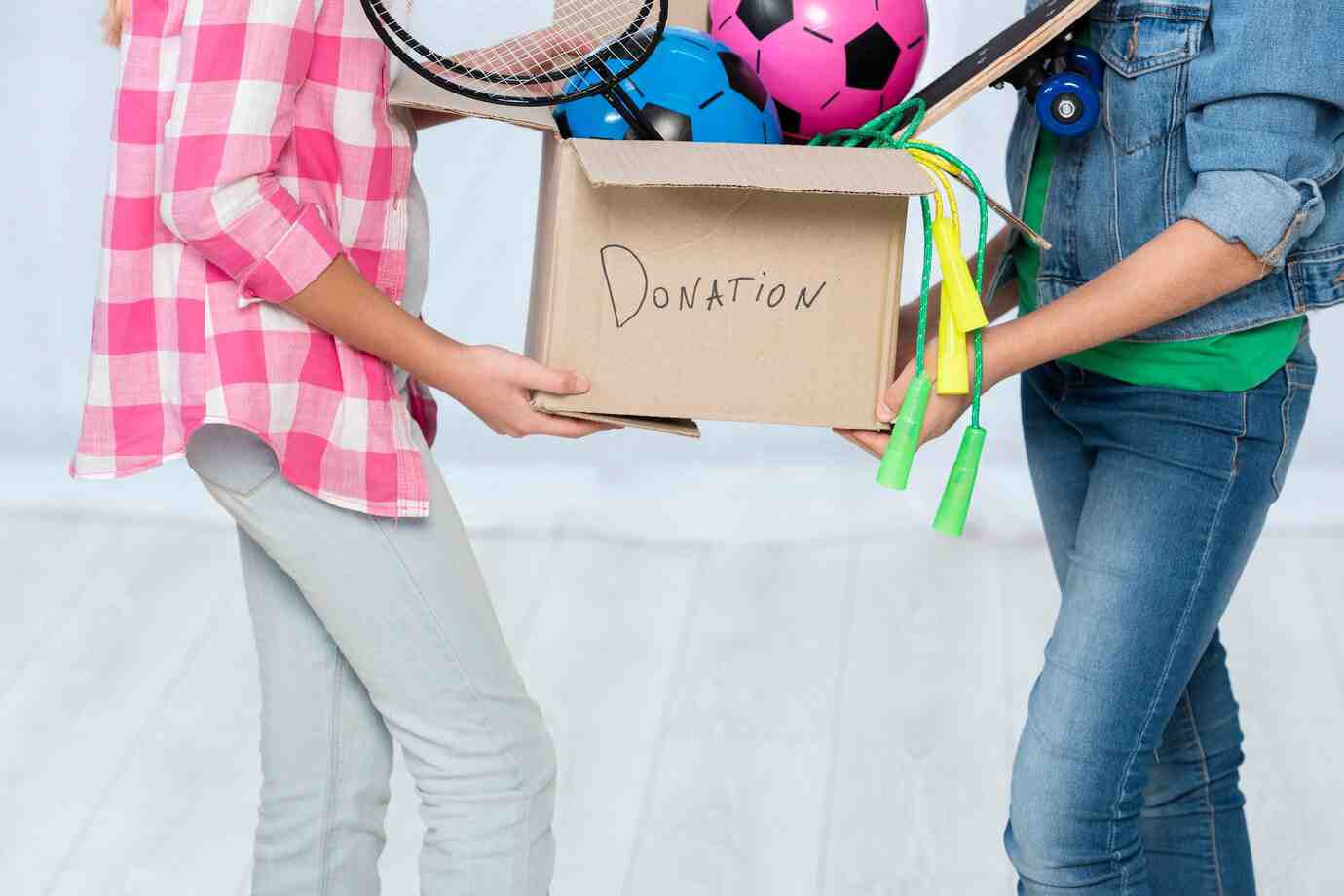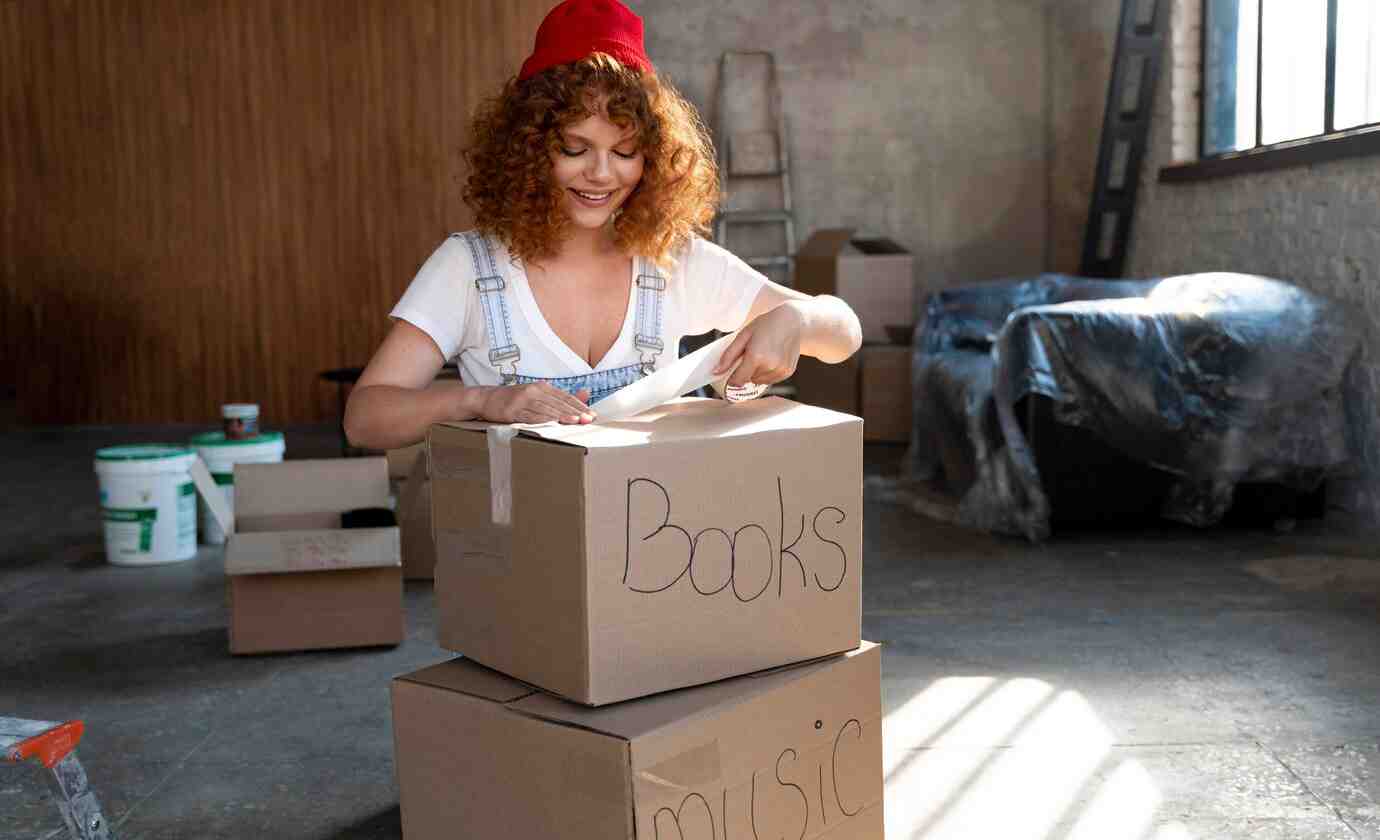The Interior Blog

How to Responsibly Donate After Decluttering
You’ve finally done it — you’ve sorted, folded, and joy-checked every item in your home using the KonMari Method. Now you’re staring at a mountain of “thank you, next” items and wondering: *”What do I do with all this?”
Decluttering is only half the journey. To complete it mindfully, it’s important to dispose of our belongings with care. Donating items responsibly bridges the gap between sustainable decluttering and true eco-conscious living.
In this guide, you’ll learn how to make thoughtful donation choices, discover eco-friendly organising tips, and find ways to ensure your once-loved items continue to spark joy elsewhere.
Why Responsible Donation Matters

Beyond a Quick Dump
It’s tempting to bag everything up and drop it at the nearest charity shop. However, not all items are needed or accepted, and overwhelmed organisations often have to landfill excess goods, defeating the purpose of decluttering sustainably.
When you donate thoughtfully, you:
- Reduce landfill waste
- Support charities effectively
- Give your items a second meaningful life
Honour the Spirit of KonMari
Marie Kondo teaches us to show gratitude towards items and respect for their next journey. Mindful donating completes that cycle beautifully.
Preparing Your Donations Thoughtfully
Curate What You’re Donating
Before dropping off items, ask:
- “Is this item in good condition?”
- “Would I feel comfortable giving this to a friend?”
General rule: If it’s broken, dirty, or incomplete, it’s unlikely to be helpful for donation.
Good Donation Candidates:
- Gently worn clothing
- Books in readable condition
- Working electronics
- Complete toys and games
- Kitchenware without cracks or missing parts
Clean and Prepare
- Wash clothing and textiles.
- Wipe down the surfaces of electronics and appliances.
- Bundle small parts (like board game pieces) securely.
- Remove personal information from devices and papers.
Presentation matters. Clean, organised donations are more likely to be accepted and appreciated.
Research Where to Donate
Find organisations that:
- Accept the types of items you’re donating
- Are aligned with your values
- Clearly state their needs
Some examples:
- Local charity shops
- Women’s shelters (for clothes, toiletries)
- Libraries (for books)
- Animal shelters (for towels, blankets)
- Refugee organisations (for household essentials)
Where to Donate Responsibly
Clothing and Accessories
- Charity Shops: Choose smaller local charities that often need specific clothing types.
- Dress for Success: Supports women re-entering the workforce.
- Recycling Centres: For textiles that are too worn to donate, check for fabric recycling bins.
Books

- Libraries: Some accept gently used books.
- Schools or Literacy Charities: Children’s books are often in high demand.
- Little Free Libraries: A brilliant way to share books locally.
Furniture
- British Heart Foundation: Offers free collection for good-quality furniture.
- Shelters and Housing Charities: Often need basic furnishings.
- Community Groups: Facebook Marketplace’s “Free” section can quickly connect your unwanted furniture with those in need.
Electronics
- Charity Shops: Some accept working electronics (check first).
- Specialist Recycling: If beyond use, donate to e-waste recycling programmes.
Miscellaneous Items
- Animal Shelters: Towels, blankets, old cushions.
- Food Banks: Unopened, in-date food.
- Hospitals: Magazines and children’s toys (subject to approval).
Sustainable Decluttering Beyond Donation
Host a “Joyful Swap”
Invite friends and neighbours to exchange items before donating leftovers. It’s fun, social, and keeps goods circulating locally.
Upcycle or Repurpose
Before tossing out damaged items, consider:
- Turning worn t-shirts into cleaning cloths
- Transforming broken jewellery into art projects
- Using chipped mugs as plant pots
Creativity turns “waste” into treasures.
Recycle Responsibly
If items aren’t fit for donation, use specialised recycling services:
- Textile recycling: Old clothes, even damaged ones.
- E-waste recycling: Dead gadgets.
- Household recycling centres: Larger, non-donatable items.
Check your local council website for guidelines.
Real-Life Story: Sam’s Eco-Friendly Declutter Journey
Sam, a graphic designer from Manchester, tackled his overflowing flat after reading Marie Kondo’s book.
“I ended up with twenty bin bags of clothes, books, and old gadgets,” he shares. “I didn’t want to just dump it all.”
Sam spent a weekend:
- Washing and folding clothes neatly
- Researching local women’s shelters and tech recycling centres
- Setting up a book swap event at his co-working space
“It took more effort,” Sam admits, “but it felt amazing knowing everything was going to someone who needed it.”
His flat is now a calm, joyful oasis — and he’s inspired his friends to declutter more mindfully, too.
Common Pitfalls in Donating (and How to Avoid Them)
“If I Donate It, It’s Off My Hands”
Not quite. Dumping unsuitable items burdens charities and leads to unnecessary waste.
Solution: Curate donations carefully. Only give what others can genuinely use.
“Charities Will Take Anything”
False. Limited space, resources, and demand mean charities must be selective.
Solution: Check wish lists and donation guidelines before dropping off.
“It’s Too Much Work”
It can feel daunting.
Solution: Break it into stages — sort one category at a time (e.g., clothes first, then books).
Quick Checklist: Responsible Decluttering and Donating
- Curate items in good condition items
- Clean and prepare all donations
- Research appropriate charities or organisations
- Deliver mindfully
- Recycle damaged goods responsibly
- Celebrate your efforts!
Stick this checklist inside your donation box for easy reference.
Conclusion: Let Your Donations Spark New Joy

Decluttering the KonMari way isn’t just about removing items from your home. It’s about honouring their journey and ensuring they continue to serve a purpose in the world.
Through thoughtful donating items practices and embracing sustainable decluttering, you extend the joy far beyond your own four walls. You lighten your load, support communities, and tread more gently on the Earth.
Ready to complete your decluttering journey with purpose? Start small — curate one bag, research one organisation, and feel the ripple effect of your care.
We’d love to hear your mindful donation experiences — share your favourite eco-friendly organising tips or inspiring stories in the comments below!









